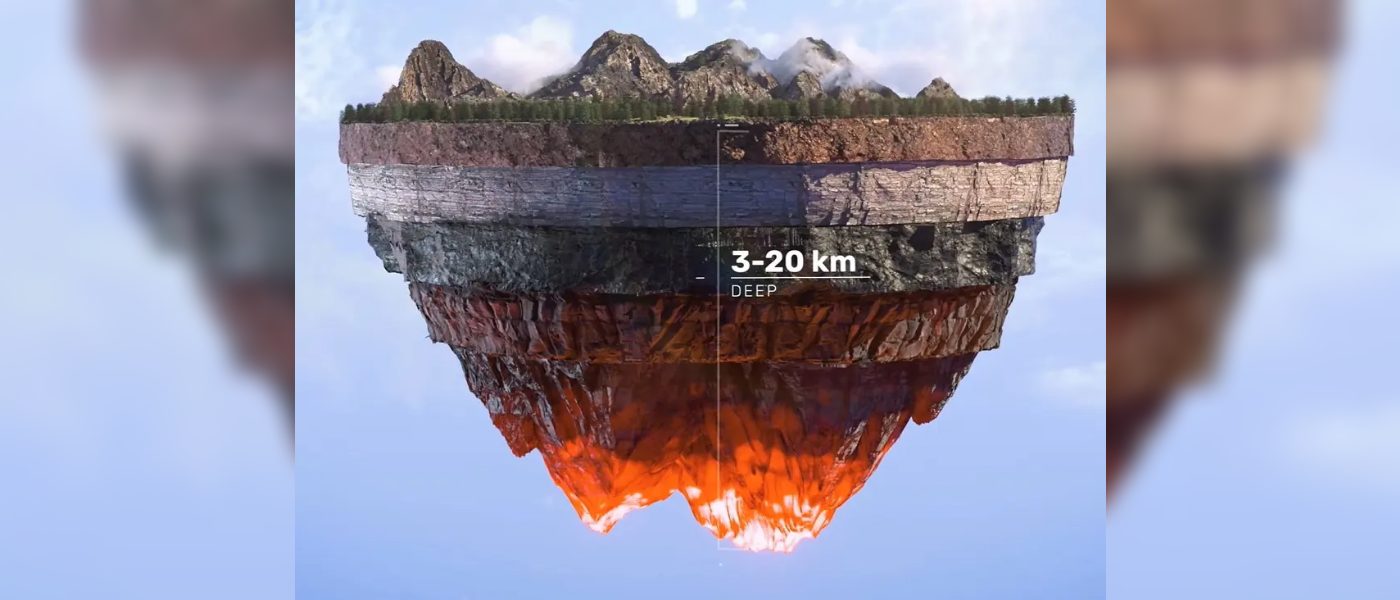
As physicists work in the nuclear fusion sector to unlock limitless clean energy through harnessing the power of the sun, they inadvertently invented a tool that could allow geothermal plants to deliver limitless clean energy by harnessing the power of the Earth.
That tool is a large millimeter-wave laser drill that will allow engineers to bore down more than 12.4 miles (20 km) into the Earth’s crust to harness the heat from the planet’s core.
Another link to nuclear fusion is that this laser drilling technology is being pioneered by a spin-off company called Quaise from MIT who also run a nuclear fusion reactor in Massachusetts.
The bottom line is that this idea is not science fiction, and Quaise has the money to put several full-scale demonstration machines into action by 2024, and hopes to have a 100- megawatt supercritical geothermal plant in operation by 2026.
At 12.4 miles into the Earth’s crust, temperatures soar to 500°C, a sector-redefining level compared to traditional drill bit borehole temperatures of around 200°C. At this stage and depth, water under the ground becomes “supercritical,” a state of matter where it’s neither a gas nor a liquid.
“A power plant that uses supercritical water as the working fluid can extract up to 10 times more useful energy from each drop when compared to non-supercritical plants,” a spokesperson from Quaise told New Atlas. “Aiming for supercritical conditions is key to attaining power densities consistent with fossil fuels.”
A recycling masterclass
It’s perhaps ironic that humans would seek to harness the energy of the sun and stars in a nuclear fusion reactor when there is 20 billion times more heat under our feet than the entire world’s energy consumption. Merely 0.03% of global energy is delivered from geothermal despite this richness.
A virtually limitless supply of energy exists in the form of this supercritical fluid snaking its way through the crust and mantle of the planet, and just 0.01% of it would provide far more wattage than the world uses.
In order to reach it though, we need better drilling technology, and Quaise is taking advantage of the work put into a 1970s piece of technology called a gyrotron. When needing to heat water into a plasma at the heart of a nuclear fusion reactor, scientists need to generate between 90-150 million degrees Celsius of heat. This has been done by both lasers and super magnets.
The gyrotron is one of those lasers, and it generates electromagnetic waves in the millimeter-wave spectrum, shorter than microwaves and longer than infrared or visible light. Designed, invented, and tested in the USSR, the device is excellent at rapidly heating up a plasma without substantial energy usage.
So, accessing already existing energy with already existing technology, Quaise has proved itself remarkably efficient. They’ve raised $63 million in funding—a pittance in the field of nuclear fusion, but they’re looking to cut out fossil fuels in a real way before the end of the decade.
Their next planned step may be the greatest recycling trick in the industry. As coal-fired power plants continue to be shuttered around the world, their giant, already established infrastructure for converting steam into electricity, large electricity distribution equipment, and talented workforce could simply be taken over by Quaise, who could merely replace the coal-fired components with those meant for harnessing supercritical water.
Pure futurism
“There are somewhere upwards of 8,500 coal-fired power plants around the world, totaling over 2,000 gigawatts of capacity, and they’ll all have to find something else to do by 2050,” writes Loz Blain at New Atlas.
Blain argues this is perhaps more revolutionary than nuclear fusion, and the beauty of the design, if it works, is that the technology originally made for fusion reactors could end up putting them out of a job.
Fusion reaction needs a bare-minimum of a decade more development before it can be deployed commercially. The financial investment needed over that time will also be substantial.
At 12-15 miles below the Earth’s surface, it doesn’t matter where the drill or ex-coal plant is located, the heat will be pretty much the same.
Tens of countries that are now struggling to advance into greener energy sources wouldn’t have to make the transition, which means hundreds of millions of acres of land saved from needing to be covered with wind turbines and solar panels, which produce huge amounts of e-waste, and don’t generate electricity if the weather conditions aren’t suitable.
In fact, the world would be set for a paradigm shift. Since unlimited clean energy could be obtained within most nations, it would untether them from geo-political concerns about oil-rich countries and their human rights abuses. On land and sea, birds and wildlife would be untouched by any massive polluting oil spills that would become a thing of the past.